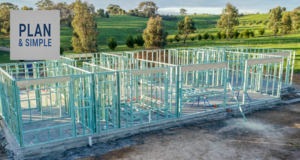
Want to retrofit ‘smart home’ technology into a house, but not sure what’s involved? The first thing you’ll need to do is figure out what sort of systems you’re after, and how they’ll be integrated.

Decided that you want to retrofit ‘smart home’ technology into a house, but you’re not sure what’s involved? The first thing you’ll need to do is figure out what sort of systems you’re after, and how they’ll be integrated.
Deciding on smart home systems
The best place to begin is to figure out exactly what it is that you’re trying to achieve. Are you looking to increase your home’s security? Beefing up the AV system and thinking of adding a few functional ‘extras’ in the process? Maybe you’d like to automate everything, both for the sake of comfort and to increase your home’s value.
Having a very clear idea of what you need your home to do in the first instance is crucial. Altering plans once work’s already underway will almost certainly blow your budget, and may also create installation problems or compatibility issues. For this reason, it’s a good idea to consult a custom installer, who can ensure that the right systems are chosen, and that your installation is properly planned and managed.
Wired or wireless?
Any sort of connected home technology can be added to an existing home – some systems just require far more work than others. Wireless systems and networks require much less effort to install – there’s no cutting involved, nor running cables through walls and installing special outlets and plugs. Wireless installations mostly involve plugging things in and setting them up.
While wireless does offer the advantage of not having to cut holes in walls, it comes with other issues like interference and range limitations, and even the potential for things to be hacked or manipulated wirelessly (which is very unlikely, but possible). Interference from other devices is the biggest issue with wireless. While it’s improved dramatically in recent years, Smart Wiring is still the more reliable option for high quality audio and video applications. A custom installer will be able to advise you on which is most suitable for your needs, house and budget.
What about DIY?
Do-it-yourself systems and home automation kits are readily available these days, and can be an easy and cost effective way of adding some basic functionality to your home. Before embarking on a DIY project though, it’s important that you know the following:
- Your own skills and limitations
- What sort of work must be done by a licensed professional (particularly when it comes to electricity and wiring)
- What to expect from the end product.
Properly understanding what you’re doing, and what sort of work needs to be done by a qualified tradesperson is very important – not just to protect the integrity of your house, but also for your own safety. Realistic expectations are also important. A DIY kit is never a substitute for a professionally designed and installed system, and it can be very tempting to bite off more than you can chew. A badly thought-out DIY install may even cost you more in terms of repairs and rectification.
Those who install professional grade systems are trained extensively on how to do so. DIY definitely has its place, but should be approached with a very clear understanding of what may be involved.





